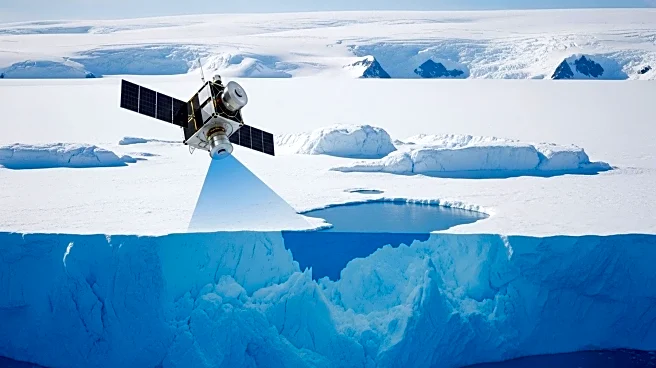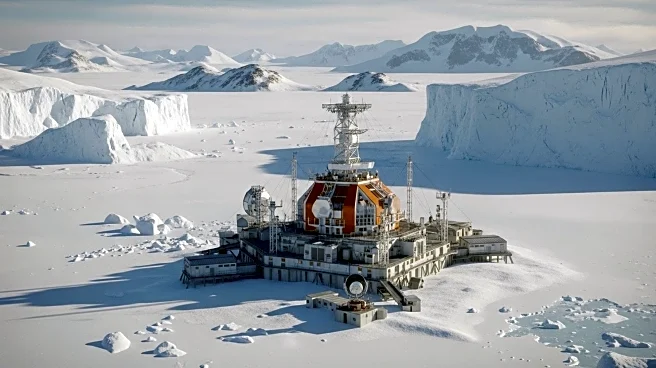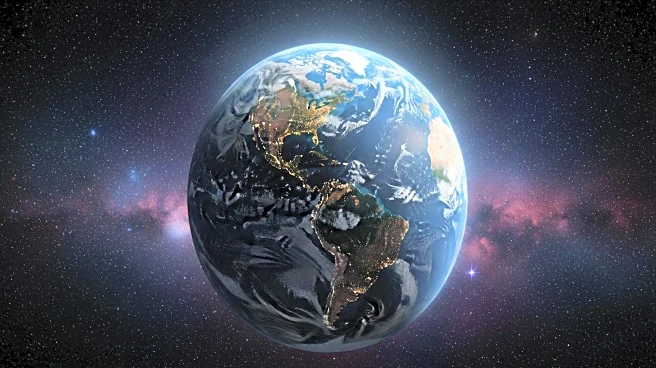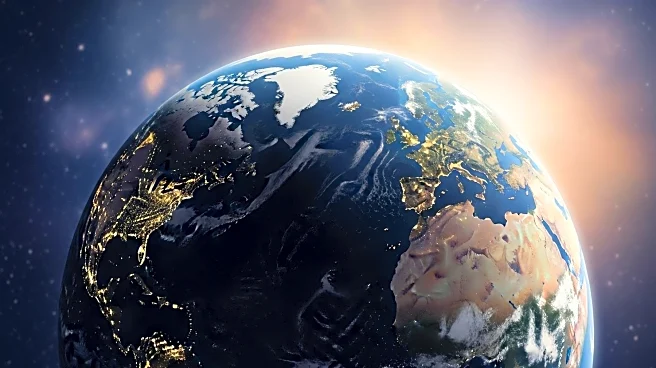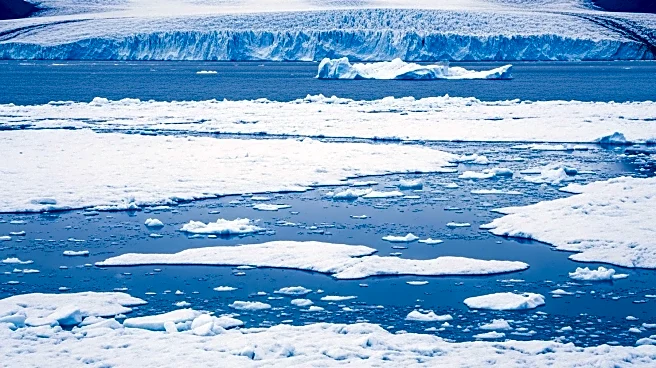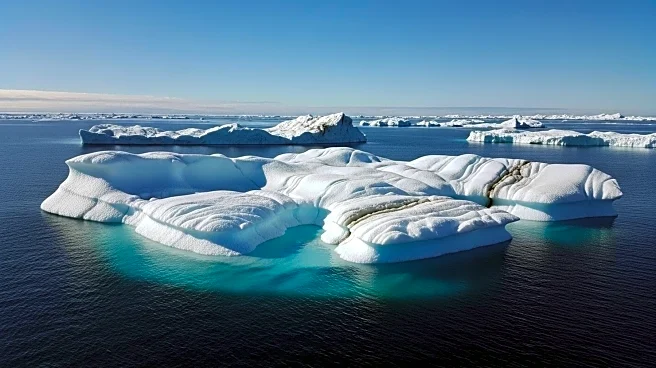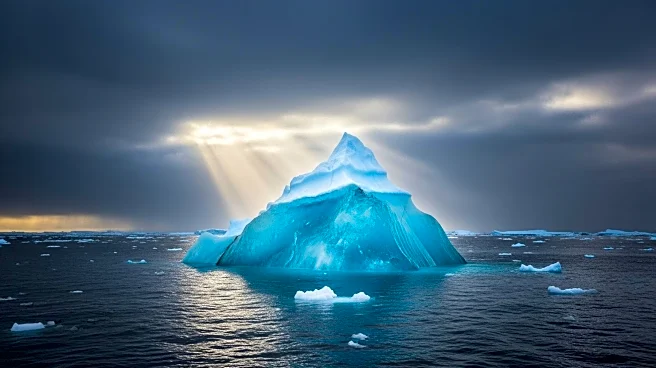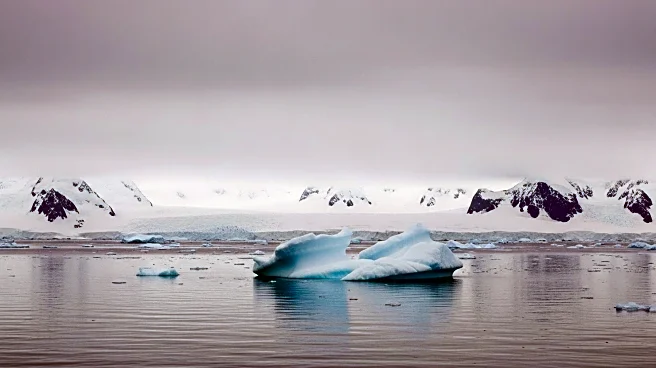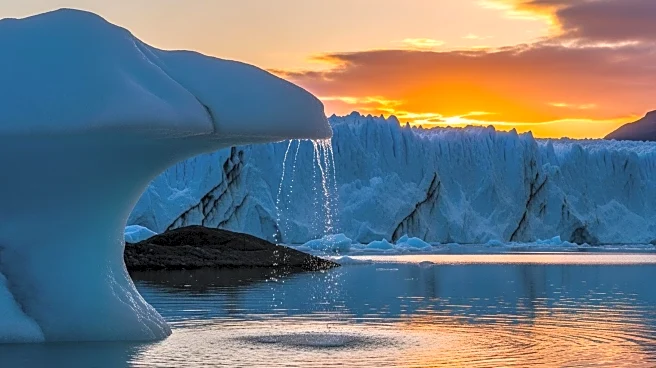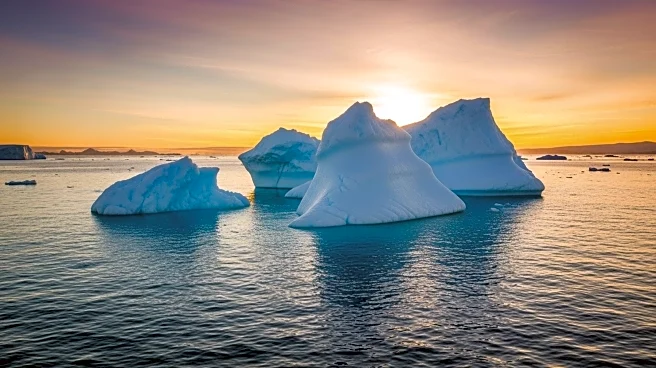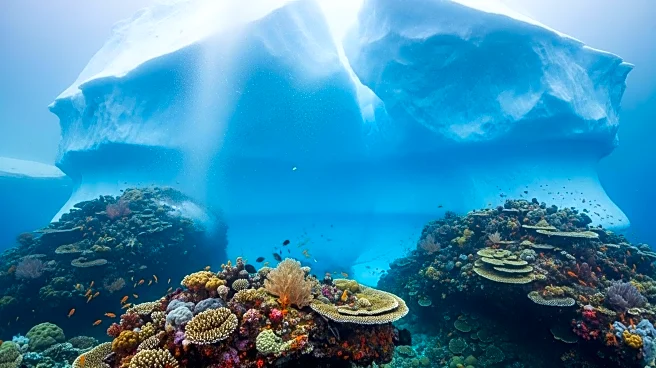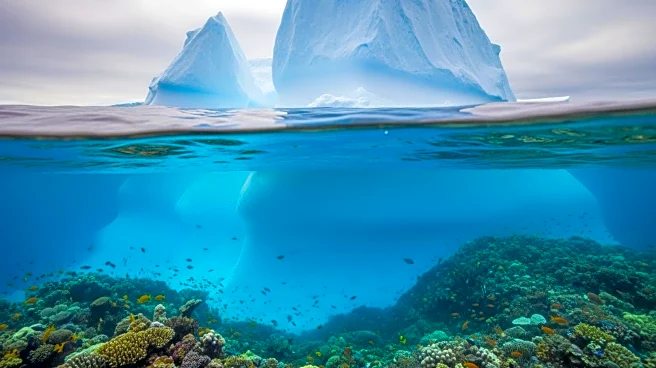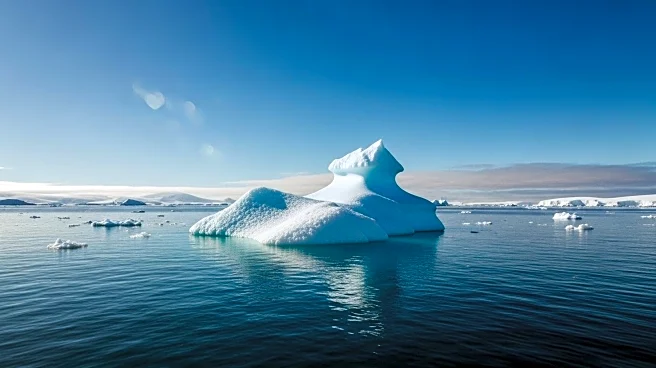What is the story about?
What's Happening?
Recent advancements in satellite technology have uncovered the presence of subglacial lakes beneath Antarctica's ice sheets. These lakes, previously hypothesized but now confirmed, play a significant role in the movement of glaciers and the rise of sea levels. The European CryoSat-2 satellite, equipped with radar altimeters, has been instrumental in detecting these lakes by observing minute surface variations over time. Researchers have identified 85 new active lakes, increasing the total known subglacial hydrological entities to 231. These lakes are part of interconnected networks that influence glacier movements, with some draining rapidly and releasing large volumes of water, thereby acting as lubricants that accelerate glacier flow towards the ocean.
Why It's Important?
The discovery of subglacial lakes beneath Antarctica is crucial for understanding global sea level rise. When these lakes drain, they reduce friction between the ice and the bedrock, allowing glaciers to move more swiftly towards the ocean. This acceleration can increase glacier flow by up to 10 percent, with lasting effects. The implications for climate models are significant, as failing to incorporate these dynamics could lead to incomplete predictions of sea level rise. This poses a threat to coastal communities worldwide, highlighting the need for updated climate models that account for these hidden hydrological systems.
What's Next?
The revelation of subglacial lakes necessitates a reevaluation of climate models to better predict sea level changes. Researchers will likely focus on understanding the interconnected hydrological networks beneath Antarctica and their impact on glacier dynamics. This could lead to more accurate predictions and strategies to mitigate risks to coastal areas. As scientific understanding deepens, policymakers may need to consider these findings in climate change adaptation plans, emphasizing the importance of comprehensive models that include subglacial lake dynamics.
Beyond the Headlines
The existence of subglacial lakes challenges the perception of Antarctica as a static landscape, revealing a complex hydraulic system sensitive to environmental changes. This discovery underscores the dynamic nature of Earth's systems and the interconnectedness of global climate processes. As research continues, ethical considerations regarding climate change mitigation and adaptation strategies may arise, particularly in relation to protecting vulnerable coastal populations.
AI Generated Content
Do you find this article useful?
